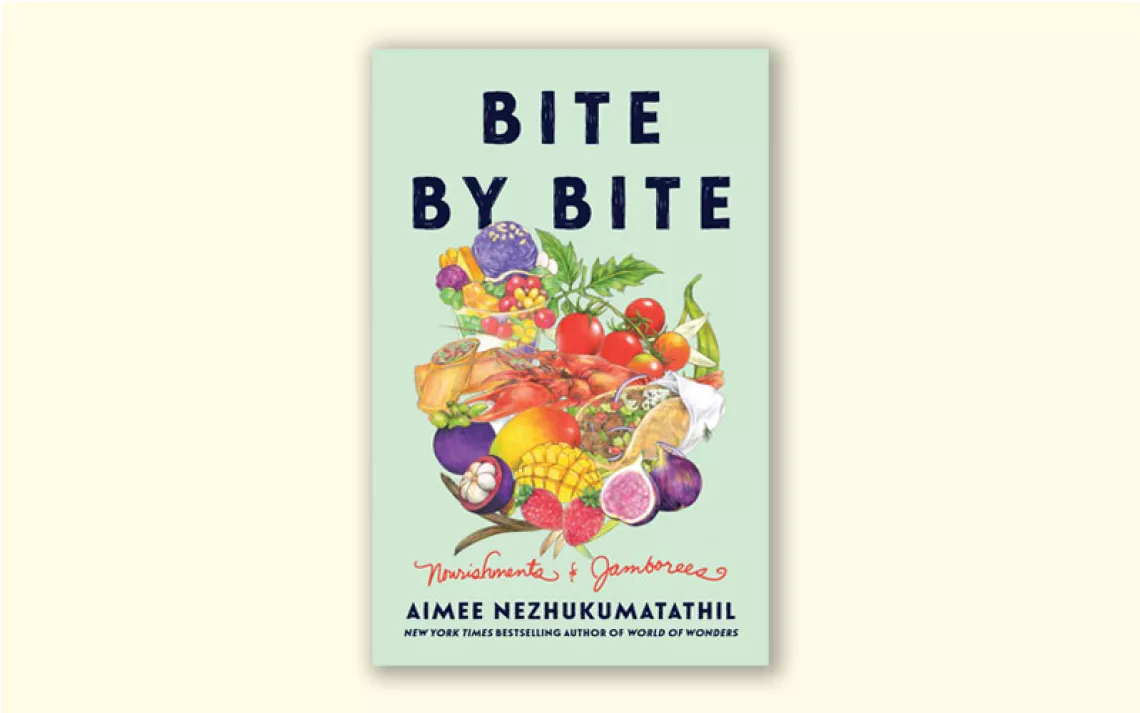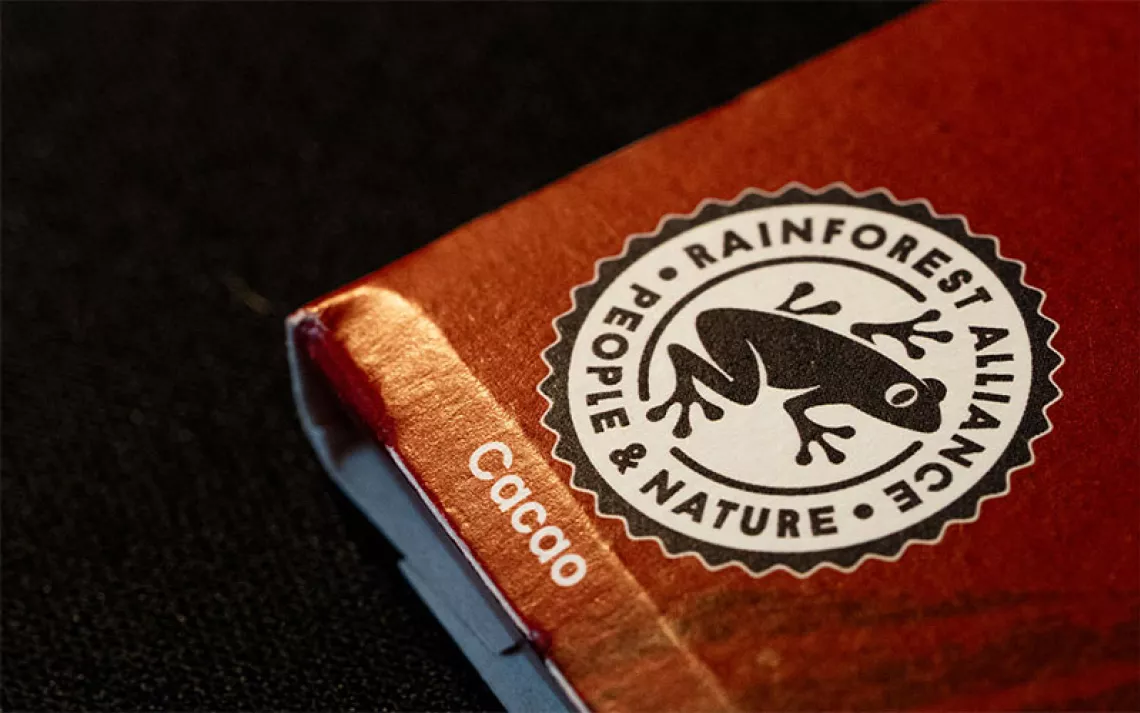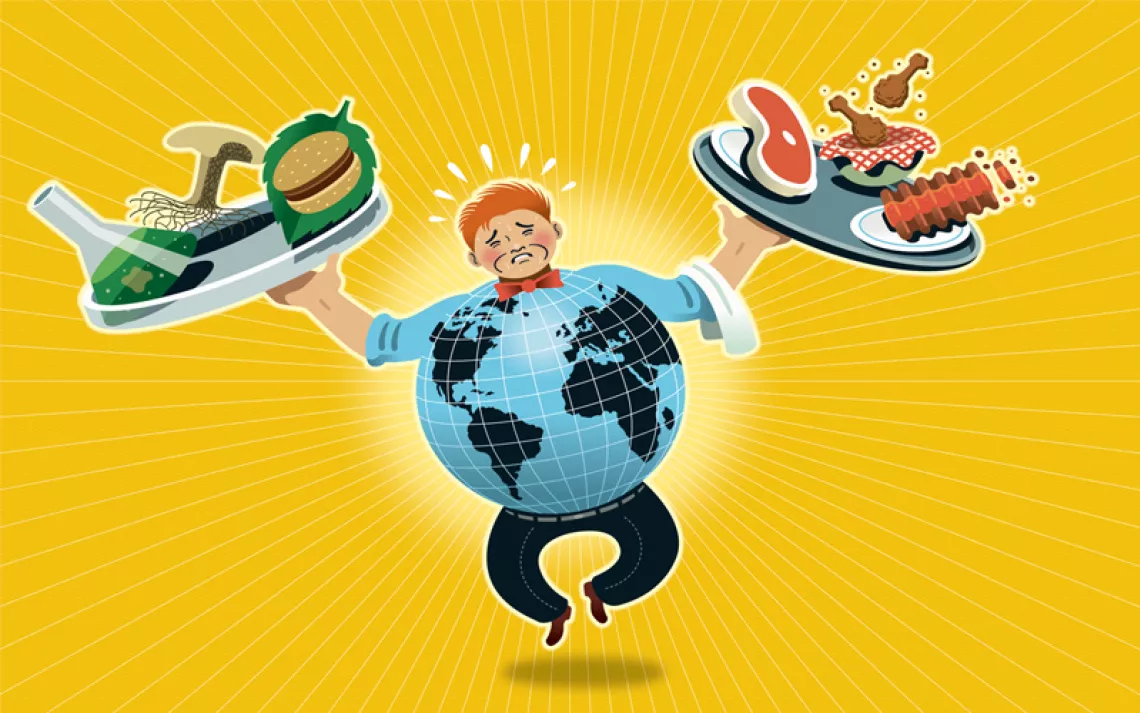Say Hello to Big Seed
When Bayer swallows Monsanto, it will control a quarter of the world's seed market
The past decade has seen an alarming rate of concentration in the U.S. seed market—the top six biotech chemical companies have been steadily buying up and acquiring smaller, independent seed companies. Within the past year, those six have further consolidated into three and now control an estimated two-thirds of the global pesticide and seed market.
Each merger had to be approved by anti-trust regulators, which have so far signed off on mergers between agri-chemical giants DuPont and Dow Chemical, as well as ChemChina and Syngenta. But this week saw the largest merger settlement in the Justice Department’s history. Bayer, the German producer of pharmaceuticals, agrochemicals, fertilizers, and biotech seeds, got final approval to seal a $66 billion deal to acquire seed-maker Monsanto. This merger consolidates control of more than a quarter of the world’s seed and pesticides market, creating the largest seed and crop chemicals company in the world.
The companies, both of which breed, distribute, and market genetically modified cotton, canola, and soybean seeds—and custom-tailor pesticides to pair with them—first announced this deal in September 2016. The E.U. approved the merger in March, but Bayer didn’t win regulatory approval to buy Monsanto in the U.S. until the company agreed to sell off some $9 billion in corporate assets—the largest such sale ever required by the Justice Department—to German chemical company BASF.
That process is expected to take two months. When it is over, Monsanto’s name—which has come to symbolize the controversies surrounding genetically engineered crops—will be retired, and the company’s products, including its flagship weedkiller, Roundup, will be sold under the Bayer name.
Bayer says its blockbuster deal will increase agricultural productivity and help feed a growing world population. The merger’s critics say it will further reduce competition, hinder innovation, create barriers to smaller companies trying to enter the market, and reduce the choices that farmers have between sellers of seed and fertilizer—making it easy for sellers to raise prices, a move that could result in higher food prices for consumers.
“This $66 billion merger means the companies are taking on that debt,” says Tiffany Finck-Haynes, a senior food futures campaigner with Friends of the Earth. “They’re going to try to pay it back as quickly as they can—so they’re going to double down on chemical-intensive agriculture and try to sell as many of their top products as possible, and urge farmers to purchase the seeds and pesticides they manufacture that are not consistent with organic, sustainable agriculture.”
Others note that this merger raises serious questions about the future of our food systems, waterways, and pollinators. Sierra turned to various experts to get a better sense of the implications of the Bayer-Monsanto merger. Here’s what it could mean for various players.
For farmers: Linus Soldberg of Cylinder, Iowa, has been a farmer since 1960 and seed supplier since the '70s. When he began selling seed, he says, state universities were handling the bulk of their research and production. “So, you’d go and get your seeds from them—it was public seed,” he says. “But when the corporations took over, everything got a patent on it and there was very little public seed. You couldn’t legally keep your seed and plant it the next year, due to contracts.”
From 1995 to 2015, Monsanto purchased 19 seed companies. After completing mergers, Monsanto reduced their acquired companies’ offerings, forcing farmers to make do with a limited selection. If seed and chemical mega-merger history repeats itself, after the Monsanto-Bayer merger, farmers will likely have to pay even more for a diminished array of seed options, with less bargaining power.
This will hit smaller farmers hardest. “The wave of consolidation has really paired with the loss of small to midsize family farms,” Finck-Haynes says. The U.S. farm economy is already struggling (according to the National Farmers Union, farmer income is down by 50 percent nationally since 2013). It’s gotten more expensive for farmers to make it, Finck-Haynes says, so we’ve seen a mass exodus of them.
It’s also gotten harder for new and beginning farmers to break in. Capital and operating costs are so high that only bigger-scale industrial farms can survive. As Nebraskan former farmer Traci Bruckner, who worked on agriculture and conservation policy at the Center for Rural Affairs, puts it, “There’s no place where you can see the effects of corporate consolidation more clearly than in rural America.”
Andrew Jerome, communications director for the National Farmers Union, notes that the Bayer-Monsanto merger is likely to affect not only the cost of genetically engineered seeds, but also those for non-GMO, or conventional, seeds. “Farmers need seed that’s appropriate to their region and climate,” Jerome says. “Over time, suppliers have cut back on conventional seed offerings, making it more difficult for farmers to get appropriate seeds.”
While small and family farmers may be hit hardest, he adds, large farms will also suffer from limited choice and rising costs. “This has become a monopoly,” Soldberg says. “When you have a lot of money, you can charge whatever you want, and you can put all these lobbyists out there. No one in Washington, D.C., has the balls to stop these mergers.”
For consumers: While they’ll be less directly affected, consumers could end up paying more for food. It’s also possible that they will see more genetically engineered food on supermarket shelves, as farmers are faced with fewer seed options in an even more competitive marketplace. Public health epidemics like this spring’s multistate E. coli O157:H7 lettuce outbreak could also rise. “Once a market is that consolidated, it only takes one among those handfuls of companies to be a bad actor to mess up the food supply and put people’s safety at risk,” says Casey Francis, an organizer for Sierra Club’s Our Wild America campaign.
For biodiversity: Less competition means that the few remaining competitors don’t have as strong of an incentive to invest in research and development. “There are now fewer traits and varieties available to farmers,” Finck-Haynes says. “It’s so expensive to develop new traits and get new product to the markets,” she says, “so part of the merger problem is that companies streamline their operations and in the long run sacrifice research and development, jobs, and innovation.”
John Crabtree, the Nebraska campaign representative for the Sierra Club’s Beyond Coal campaign, notes that Monsanto’s business model already has virtually nothing to do with innovation. “For 40 years, they’ve done the same thing: Take a biotech trait and stick it into a crop seed, and turn that around and make money off of it. Then, take the chemical pesticide related to that trait and sell it—that’s how you create that monoculture with the highest yield for farmers, and that’s how these companies make money,” he explains. “They’re not trying to work on sustainable agriculture or organic systems, and they control so much research and public institutions that this merger will further diminish any research anyone’s doing to help us put fewer chemicals in our crops.”
Consolidation typically reduces rather than inspires innovation because the majority of commercial seed companies have proprietary control over their seed lines, thanks to hybridized techniques and/or restrictive utility patents or licensing agreements that apply to specific seed varieties and genetic traits. These intellectual property rights go so far as forbidding farmers to save seed and prohibiting outside research on crop genes for which the company has the patent.
Jerome of the National Farmers Union explains that a less-diversified crop system makes our food system all the more vulnerable. “Diversity in the food system increases crops’ resilience in the face of climate change and in the face of volatility across the markets,” he says. “With fewer players controlling what’s being produced and how it’s being produced, you have a less resilient food system.”
For pesticide use: Paul Towers, organizing director and policy advocate for the Pesticide Action Network, says agri-chemical mergers also tend to lead to increased pesticide use. “These companies’ entire motivation is to sell as many seeds and as many pesticides as possible, so they can double-dip,” he says, adding that it was the advent of genetic engineering in agriculture that drove the vast proliferation of herbicide use.
For pollinators: This merger is bad news for bees and butterflies. For starters, Bayer is a top manufacturer of neonicotinoid pesticides, which are often applied to seeds as a protective coating that is absorbed into the vascular system of the plant as it grows. Studies have found that neonicotinoids build up in the soil and migrate into the pollen and nectar of a plant at levels that can damage the memory and cognitive function of pollinators that visit them, causing their numbers to dwindle over time.
Neonicotinoids also enable farmers to farm to the very edge of their fields. “When you’re planting thousands of acres of corn and you get rid of every single weed, your cornfields are devoid of any types of food for foragers, so now there’s no consistent or regular place for a bee or other pollinator to seek nourishment,” Towers explains. “This larger loss of biodiversity and stable food supplies, in addition to the direct exposure of harmful chemicals, kills off bees and monarch butterflies, our most important pollinators.”
Waterways: “What we can expect to see from this merger is more pesticides being used,” says Alexander Rony, a senior digital innovation campaigner at the Sierra Club. “Which means that more farmworkers will be harmed and more waterways polluted.” Nomi Carmona, national online organizer for the Club’s pollinator protection work, adds that many genetically engineered crops “use seeds coated with bee-killing insecticides, and usually the fields are sprayed with pesticides harmful to pollinators, the environment, and human health. As bugs and weeds develop resistance to the toxins, pesticide manufacturers have engineered stacked-trait crops with the implied use of multiple pesticides, which they conveniently sell.” She adds, “And then there’s the heavy use of nitrogen-based fertilizers for corn. So you have all these toxins bleeding into the waterways, and the conversion of biodiverse land into monocropped corn ethanol and soy for biodiesel production just degrades and removes pollinator habitat. The increased, industrial agriculture means excessive nutrient pollution runs off into the ocean too, contributing to severe algae blooms suffocating marine life and exacerbating the giant dead zone in the Gulf of Mexico.”
Politics: Bayer and Monsanto spent more than $5 million on lobbying in 2017. Prior to the merger’s approval, the CEOs of both companies met with Trump at Trump Tower. This merger is likely to make the agri-chemical industry an even bigger political player. “It’ll have even more behind-the-scenes power with politicians and federal agencies,” says Rony, who adds that the decision to drop Monsanto’s name was likely a PR move. “‘Monsanto’ has been a touchstone for activism for years now,” he says. “People tend to only think of aspirin—something that makes your headaches go away—when they see Bayer. Advocacy groups will have to start over in terms of educating people about this corporation.”
What You Can Do
It’s too late to stop this merger, but pay attention to the federal package of food and farm policies known as the farm bill. The Senate is expected to unveil its draft any day now, and the House has to vote on its farm bill (the first attempt didn’t pass) by June 22.
Make sure your legislator knows how you feel about farm bill provisions that are designed to help pesticide manufacturers and industrial commodities providers. On an individual level, it may be more important than ever to double down on efforts to purchase local foods, use CSAs, and otherwise support food producers who aren’t tied to Bayer’s and Monsanto’s agri-chemicals.
Here’s one potential silver lining to this merger: Farmer and seed supplier Linus Solberg says the trend of consolidation has more farmers bowing out of that market entirely by going organic. “They can charge more for a bushel of corn,” Solberg says. “And a lot of people want to go back to the old way of farming—of cultivating like we used to do when I was a kid and we didn’t have all those chemicals. In the past decade, we gained 30,000 more organic acres in my region alone.”
 The Magazine of The Sierra Club
The Magazine of The Sierra Club




